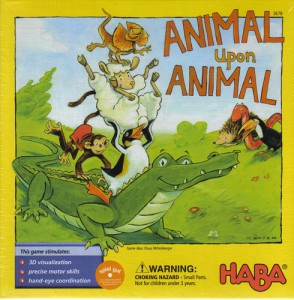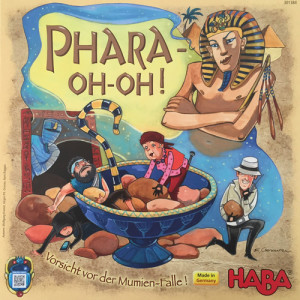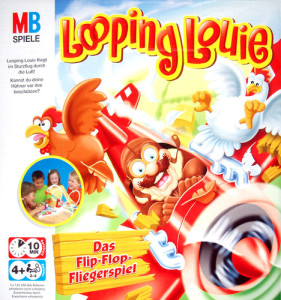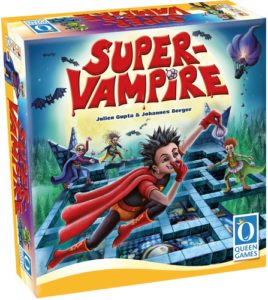- Learning time
- 5 minutes
- First play time
- 15 minutes
Dancing Eggs
Designed by: Roberto Fraga
In Dancing Eggs players are competing to score the most points at the end of the game – each egg is worth one point, except one (the wooden egg) which is worth 2 points.
The game begins with the eggs (in rubber, one wooden) placed centrally on a table, and is best played standing up – get those chairs out of the way! The starting player rolls a red die, which decides what will happen. Depending on which side of the die lands face up it will be one of six things: take an egg from the box, be the first to yell cock-a-doodle-doo, don’t yell cock-a-doodle-doo (if you do, you lose an egg!), bounce a (rubber) egg on the table and first to grab it keeps it, be the first to grab the red die (gets you an egg) or everyone runs around the table and the first back to their position gets an egg.
If you take an egg at any point, you roll the white die, which tells you where to hold it: it might be between your legs, the crook of your arm, under your chin and so on. The game continues until somebody drops an egg, at which point everyone counts up the eggs they’re still holding (wooden egg scores 2!). Most points: wins.
The guru's verdict
-
Take That!
Take That!
If the eggs have run out on the table, players can steal eggs from each other. But it's mostly about reacting the fastest - and not dropping those eggs.
-
Fidget Factor!
Fidget Factor!
None. At any point you may be required to grab a die, catch an egg, run around the table, or yell cock-a-doodle-doo. Or stop yourself yelling it.
-
Brain Burn!
Brain Burn!
None.
-
Again Again!
Again Again!
It tends to be a noisy game (especially with adults!) and it's probably not one to get kids to focus. But it is good, silly, idiotic fun.










Sam says
Long lazy afternoons in the winter can probably be filled in better ways, but for a ten minute hit of physical silliness Dancing Eggs is hard to top.